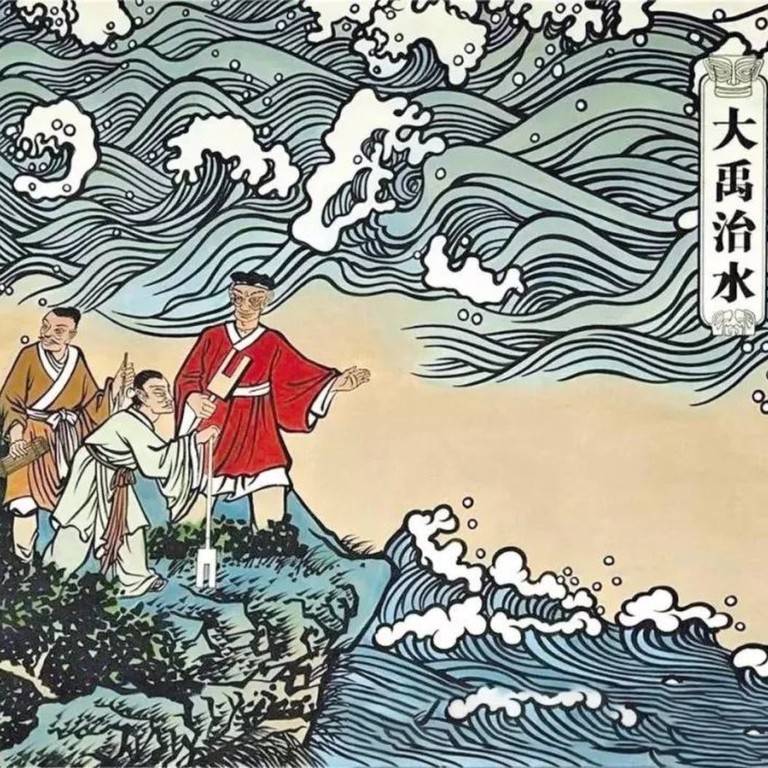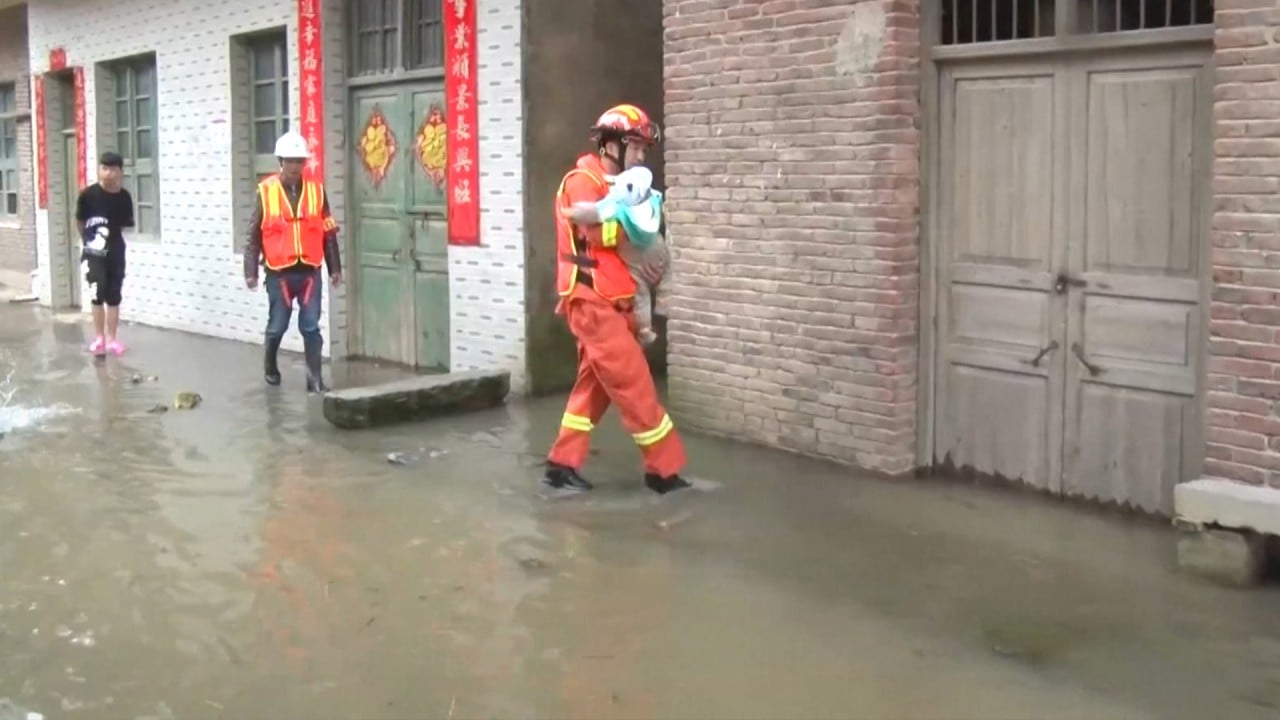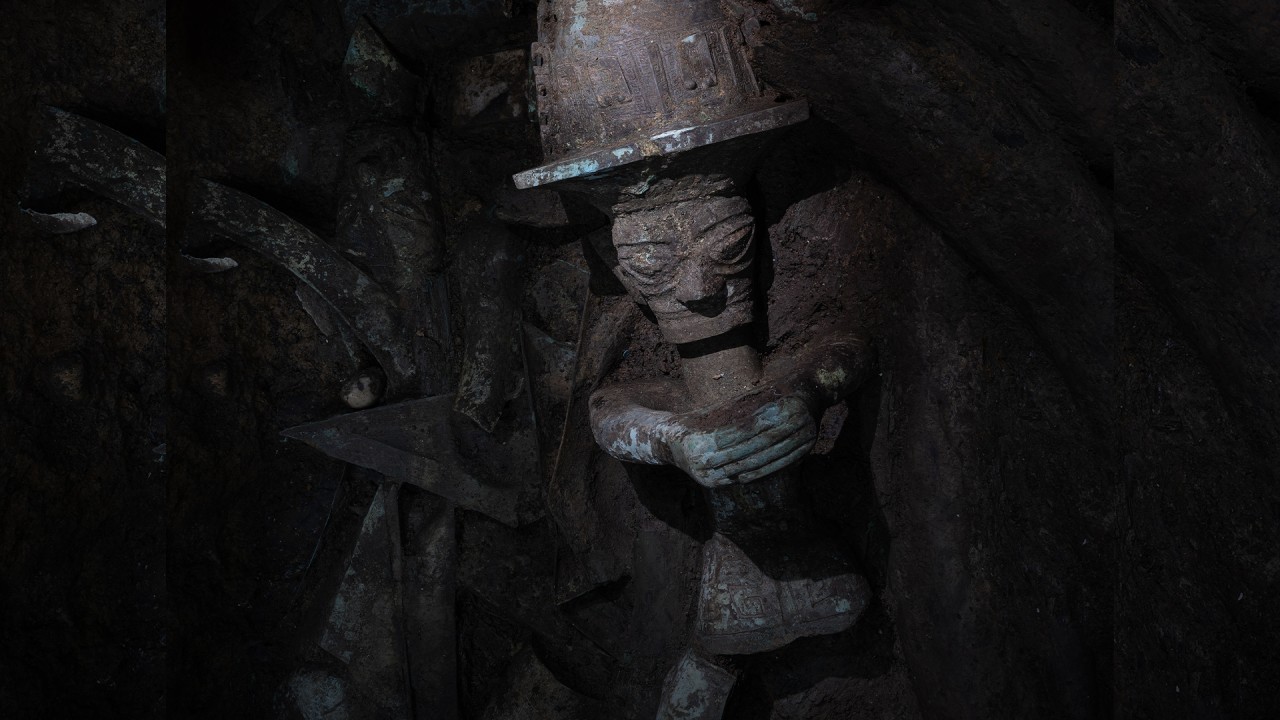
A great flood may have helped ancient Chinese civilisation expand southward, geologists say
- Researchers say they have found new evidence supporting a 4,000-year-old legend about the founder of China’s first dynasty
- Cave samples show climate around the Yangtze River became wetter around 2,300 BCE, leading to floods that might have sped up the collapse of southern tribes
128 children buried in ancient Chinese funerary tradition discovered in northern China
“It is plausible that Yu took advantage of the climate transition to expand southward and defeat the Sanmiao tribe,” the researchers said in a paper published in the peer-reviewed journal Quaternary Research in May.
Climate change and geological elements “play an important role in cultural development”, said the team led by Professor Tan Liangcheng with the Institute of Earth Environment, Chinese Academy of Sciences in Xian.
Floods also swept across the Yellow River region during this period, according to the team’s previous studies, but the new cave records showed the situation in the south was probably much worse.
“The evidence confirms the legend of the Great Flood and the Xia dynasty to some extent,” the team said.
According to legend, Yu the Great led the construction of massive drains over the Yellow River plain.
But he faced strong challenges from the south. The southern tribes flourished in the hilly lowlands from 3,800 BCE to 2,300 BCE, when the drought climate was favourable for rice cultivation, according to Tan and his colleagues.
‘Unprecedented’: 13,000 artefacts from mysterious Chinese kingdom found
The middle Yangtze River basin in south-central China nurtured multiple Neolithic cultures at that time, including the Daxi, Qujialing and Shijiahe, whose social and economic development rivalled – and at times exceeded – that of the north.
According to China’s State Administration of Cultural Heritage, these southern cultures enjoyed “developed farming, sophisticated artefacts, and unique courtyard buildings”.
The Shijiahe culture, which flourished near Remi Cave, is thought to have developed a sophisticated civilisation with its population reaching a peak around 2,300 BCE.
Tan said that, according to his team’s data, the region’s climate had gradually become wetter after 2,300 BCE.
The expansion of lakes in the flood plain threatened the settlements of the Shijiahe and other cultures in low-lying areas. Increased rainfall and floods damaged plants and homes.
Archaeological studies found that southern artefacts changed drastically around 2,200 BCE, taking on new features from the northern cultures of the Yellow River region.
According to the researchers, this suggests cultural exchanges occurred in the region during this period, perhaps as a result of Yu’s battle against the Sanmiao tribes. The flood, together with military conflicts with the north, might have accelerated the collapse of the southern cultures.
In recent years, Chinese archaeologists have discovered many prehistoric sites in southern China with cultures significantly different from Han civilisation.



